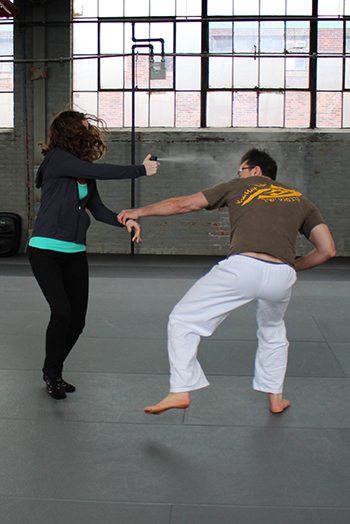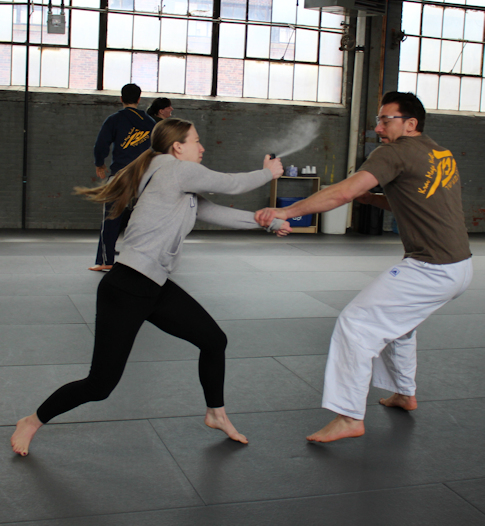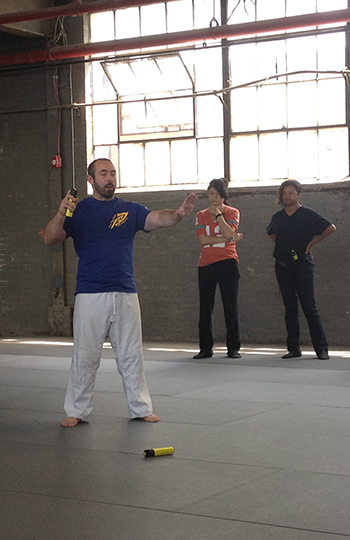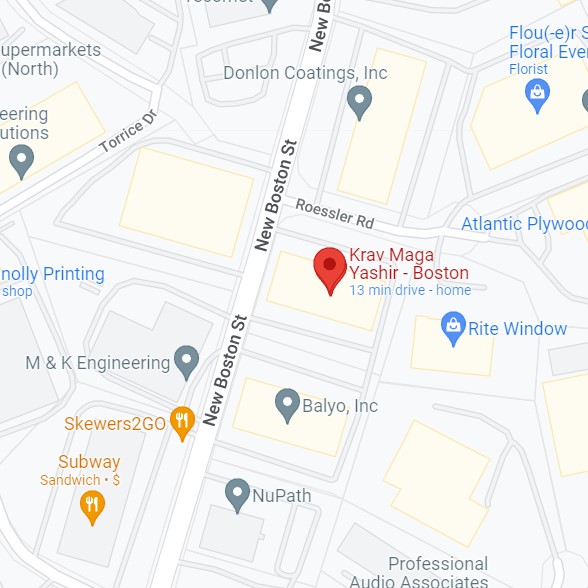Women's Self-Defense Boston - Pepper Spray
To see when the next free women’s self-defense pepper spray class is, please click here
 The law in Massachusetts changed in 2015, to allow persons over the age of 18, to purchase and carry pepper and other defensive sprays, without having to have an FID card
(Firearm Identification Card). This gives women over the age of 18, the opportunity to carry pepper spray without having to go through an application process, or complete
any paperwork. This article, aims to explain how, where and when the use of pepper spray is appropriate and effective, along with situations where it is probably not applicable
to use. This article will also explain the different types of spray, and the pros and cons of each - and in which situations one type may be more effective than another.
The law in Massachusetts changed in 2015, to allow persons over the age of 18, to purchase and carry pepper and other defensive sprays, without having to have an FID card
(Firearm Identification Card). This gives women over the age of 18, the opportunity to carry pepper spray without having to go through an application process, or complete
any paperwork. This article, aims to explain how, where and when the use of pepper spray is appropriate and effective, along with situations where it is probably not applicable
to use. This article will also explain the different types of spray, and the pros and cons of each - and in which situations one type may be more effective than another.
The first thing to note is that not all defensive sprays are the same. There are basically two types: OC sprays (Oleoresin Capsicum) which are derived/extracted from different
types of pepper, and are referred to as "pepper" sprays, and CS/CN Sprays, which comprise of a man-made, non-organic chemical, 2-chlorobenzalmalononitril, which is known as
"Tear Gas" (MACE is a brand that originally produced a type of CS/CN Spray though now also produces OC/Pepper Spray, sometimes in a combination with a CS spray). The two are
not the same, and although they have similar effects, there are major differences as well.
Pepper spray (OC) is an inflammatory agent i.e. it inflames tissue - it causes the eyes to shut immediately (if the eyes do stay open the capillaries will dilate causing
temporary blindness), and causes the tissue of the nose and throat to swell, effecting breathing. CS Spray is an irritant - it causes stinging and discomfort (to which some
people are, and/or can become immune). As an irritant, it causes the eyes to tear/water but not to close, and it can cause coughing and breathing difficulties. Another big difference
between the two, is that CS/CN Sprays can take 5 seconds or longer to have an effect, whereas Pepper or OC Spray is effective immediately. 5 Seconds may not seem like a long time,
however you should consider that the average attacker will be able to run 30 yards in that time, and it is unlikely that any assailant you face will be that far away. Using
something that is instantaneously effective is a much safer way to go.
 Unless you have been sprayed with pepper spray, it is easy to underestimate its effects. When sprayed, a person will instantaneously be blinded, their breathing will be affected to the
point where they feel the equivalent of an asthma attack. At the same time their face (or whatever skin comes in to contact with the spray) will burn. When you choose a spray you should
look at its SHU (Scoville Heat Units) value; this will determine how hot it is. A Jalepeno pepper has an SHU value of anywhere between 3500 and 10000, most pepper sprays have a SHU value
of between 3 to 5 million. This means that on average you are basically rubbing 300-1000 of hot peppers, into someone's eyes and face. From a self-defense perspective this is both effective
from a sheer pain perspective, as well as from closing the eyes, and effecting the breathing.
Unless you have been sprayed with pepper spray, it is easy to underestimate its effects. When sprayed, a person will instantaneously be blinded, their breathing will be affected to the
point where they feel the equivalent of an asthma attack. At the same time their face (or whatever skin comes in to contact with the spray) will burn. When you choose a spray you should
look at its SHU (Scoville Heat Units) value; this will determine how hot it is. A Jalepeno pepper has an SHU value of anywhere between 3500 and 10000, most pepper sprays have a SHU value
of between 3 to 5 million. This means that on average you are basically rubbing 300-1000 of hot peppers, into someone's eyes and face. From a self-defense perspective this is both effective
from a sheer pain perspective, as well as from closing the eyes, and effecting the breathing.
The percentage value on the spray e.g. 5 to 15 %, is less important than the SHU value. A can of pepper spray contains three things: the propellant (that which forces the spray out of the canister), a carrier (either water or oil based), and the active ingredient itself - the pepper. The percentage value simply refers to how much of the carrier and the active agent, is the pepper itself. A spray with a value of 5% or more should be sufficient.
Carrying a spray (or any other weapon for that matter) however effective will not be of much use unless it is ready to hand, and there may be situations that you find yourself in where you don't have easy access to it. If you are at a party, a social gathering, or with a friend or acquaintance in your house or someone else's, it is unlikely that you will have your spray within easy reach. If a situation is not overtly threatening you probably won't have your spray with you, and in reality it is these situations, which are mostly like to contain danger/risk e.g. most women are likely to be sexually assaulted by someone they know in their home or someone else's. This should not deter you from carrying pepper spray, it is just to point out that it is not a replacement for following personal safety protocols. The situations where pepper spray is an effective tool are largely those when you are threatened by a stranger e.g. dealing with aggressive/dangerous individuals in parking lots, on the street, when you are in your car, when you are answering your door etc.
 There are four different types of spray: foggers/cones, streams, gels and foams. If you have to default to one type, you should probably get a fogger/cone. These types of sprays, spray out
a conical fine mist, and don't require much accuracy i.e. point it in the rough direction of an aggressor and depress the trigger. Streams require a bit more accuracy; you have to aim and
make sure that it connects with your assailant's face - with the cone/fogger because it mists, anyone coming towards you through it, is going to make contact with it and inhale it. Gels
and Foams work well, when your assailant is close to you, however your real aim of using the spray is to deal with attackers at a distance – though when in close quarters, a gel or foam
can limit contamination of yourself or others in the vicinity (such as on a subway, etc).
There are four different types of spray: foggers/cones, streams, gels and foams. If you have to default to one type, you should probably get a fogger/cone. These types of sprays, spray out
a conical fine mist, and don't require much accuracy i.e. point it in the rough direction of an aggressor and depress the trigger. Streams require a bit more accuracy; you have to aim and
make sure that it connects with your assailant's face - with the cone/fogger because it mists, anyone coming towards you through it, is going to make contact with it and inhale it. Gels
and Foams work well, when your assailant is close to you, however your real aim of using the spray is to deal with attackers at a distance – though when in close quarters, a gel or foam
can limit contamination of yourself or others in the vicinity (such as on a subway, etc).
The one disadvantage the cone/fogger has, is that strong winds can affect the way it disperses i.e. because it creates a fine mist. However the advantages that the other sprays have are
largely effected by distance; they either need to be fired accurately which makes them more useful at closer ranges (streams), or actually can't be fired from great distances e.g. foam and
gels. When you consider this, a fogger/cone at close range won't really be affected by the weather and is therefore at least equal to these other types.
When you purchase your spray, you should test it. You should also do this roughly every 12-18 months (most have an expiration date on them however rather than wait for this date, it is
good to get into the habit of regularly replacing them). The last thing you want is a spray that doesn't work when you most need it. The easiest way to test it, is to go outside on a
non-windy day, and spray a small amount. Then direct your head towards it and breathe in. If it causes you to cough etc. it is probably still good. If not, replace it.
Pepper spray is a great tool to add to your self-defense/personal safety arsenal, however it will be largely ineffective if you are unable to recognize threats, and identify dangerous people
before they get too close to you, and so you should not believe that carrying spray in and of itself will keep you safe.
One of the great advantages of pepper spray over other weapons, is that by nature it is a "Less Than Lethal" weapon. If you were to carry a firearm, there might be many legitimate occasions
and situations where you would be morally and legally entitled to use it, however because you understand the consequences of firing a sidearm at someone, you would hesitate to do so, and during
this hesitation your assailant might take the initiative and assault you - before you had a chance to use your weapon. When you use a non-lethal weapon, whose effects will wear off in 30 minutes
or so, there is less to consider and think about when deciding to use it, as although it is extremely effective the consequences are not that great or severe. The police and other security
organizations recognize pepper spray as being a non-lethal tool, and you should do the same (you have a good point of reference); if you get it wrong, and your "aggressor" wasn't really
threatening you, the worst you'll have done in confronting them is cause them 30 minutes of discomfort.
The most important survival skill you can develop is decisiveness. If you are able to recognize a threat, and then put a plan of action into play, your chances of being successful in the
situation multiply. One of the things which slows people down in acting, is that they get caught in a state of denial i.e. they convince themselves that the danger they are facing is imagined,
or that they are overreacting. Getting over a state of denial is the first step in understanding that you have a situation to deal with. If you get into the habit of reaching for your pepper
spray canister every time you feel threatened (when you become adrenalized e.g. your stomach feels uneasy, the hairs on the back of your neck stand up etc.), and hold it as you assess the risk,
it is harder to deny the reality of your situation; the fact you have your can of spray out confirms that the situation you are in is real. This will move you out of the denial state very quickly.
Rather than look to engage the person(s) you have identified as being the threat, you should now disengage to safety, putting as much distance between yourself and your potential assailant(s)
as possible - safety could be getting to a shop, a bar or pub (where there may be security personnel), or even getting behind a parked car, which you could use as a barrier/obstacle. Your spray
should be used as a tool to put distance between yourself and your attacker(s).
At close range, the spray canister also makes a good striking tool. If you hold the canister tightly, you can "hammer" the base of it, into your attacker's face. By this time you should have tried to empty the entire contents of the spray at them - not worrying if some comes back on you i.e. your goal is to take them out of commission. You should try to strike with full force, and repeat this process, until you have an opportunity to disengage safely.
To see when the next free women’s self-defense pepper spray class is, please click here
Location
SEPS Women's Self-Defense Boston, is located, at the following address, just North of Boston off of I-93 North (exit 30) and I-95 South (exit 54).


 WOMEN'S SELF-DEFENSE BOSTON
WOMEN'S SELF-DEFENSE BOSTON